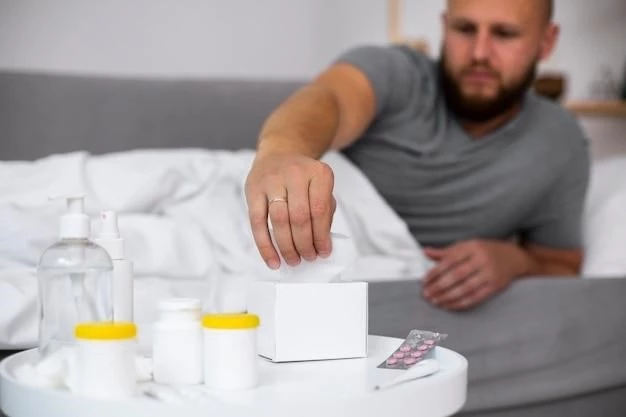Condylomata lata present as painless, raised,․․
Skin Lesions
Condylomata lata present as painless, raised, grayish-white lesions in the anogenital area․ These lesions can be flat, slightly raised, or wart-like in appearance․ They may be accompanied by a foul-smelling discharge and can spread rapidly if left untreated․

Genital Discomfort
Genital discomfort is common with condylomata lata, characterized by itching, burning, and pain in the anogenital region․ The discomfort can worsen during sexual activity and may lead to inflammation and soreness․ Seeking prompt medical attention is crucial to address these symptoms effectively․
Condylomata lata is caused by the bacterium Treponema pallidum, which is also responsible for causing syphilis․ The infection is typically transmitted through sexual contact with an infected individual․
Bacterial Infection
Condylomata lata is caused by the bacterium Treponema pallidum, a spirochete bacterium that spreads through direct contact with the mucous membranes of an infected person during sexual activity․ Treating the underlying bacterial infection is crucial in managing condylomata lata effectively․
Transmission
Condylomata lata is primarily transmitted through sexual contact with an infected individual․ The infection can spread through vaginal, anal, or oral sex․ Using barrier methods such as condoms can reduce the risk of transmission․ It is important to practice safe sex to prevent the spread of this infection․
Antibiotics, such as penicillin, are commonly used to treat condylomata lata and address the underlying bacterial infection․ Consistent follow-up with a healthcare provider is essential to monitor the treatment progress and ensure the infection resolves effectively․
Antibiotics
Antibiotics are the primary treatment for condylomata lata caused by bacterial infection․ Penicillin injections or oral antibiotics are administered to eliminate the bacteria․ It is crucial to complete the full course of antibiotics as prescribed by a healthcare professional to ensure the infection is effectively treated and prevent recurrence․
Penicillin Injections
Penicillin injections are a common form of antibiotic treatment for condylomata lata․ These injections are administered by a healthcare professional to ensure effective delivery of the medication․ Penicillin helps in eradicating the bacteria causing the infection and plays a crucial role in the successful management of condylomata lata․
Practicing safe sex, including consistent condom use and limiting sexual partners, is essential in preventing the transmission of condylomata lata․ Educating oneself and partners about sexually transmitted infections can help reduce the risk of infection․
Safe Sex Practices
Safe sex practices such as using condoms consistently during sexual activity can greatly reduce the risk of contracting condylomata lata․ Communicating openly with partners about sexual history and STI testing can also contribute to preventing the spread of this infection and maintaining sexual health․
Regular STI Testing
Regular STI testing is key to preventing the spread of condylomata lata․ Getting tested for sexually transmitted infections, including regular screenings for STIs, can help detect infections early and allow for prompt treatment․ Routine testing is essential for maintaining sexual health and preventing the transmission of STIs․
Condylomata lata left untreated can lead to neurological complications due to the spread of the infection, affecting the brain and nerves․ Seeking timely treatment is essential to prevent serious neurological issues․
Neurological Issues
If left untreated, condylomata lata can progress to affect the nervous system, leading to serious neurological complications․ Neurosyphilis, a late-stage manifestation, can result in cognitive decline, vision problems, and even stroke-like symptoms․ Early diagnosis and appropriate treatment are crucial in preventing neurological complications associated with this infection․
Pregnancy Risks
Condylomata lata can pose risks during pregnancy, increasing the chances of transmitting the infection to the newborn․ This can lead to congenital syphilis, which may result in severe health issues for the baby․ Pregnant individuals with condylomata lata should seek immediate medical care to prevent adverse outcomes and protect the health of both the mother and the baby․
Diagnosis of condylomata lata often involves a physical examination to assess any visible lesions or abnormalities in the anogenital area․ A healthcare provider may also inquire about symptoms and potential risk factors during the examination․
Physical Examination
A physical examination for condylomata lata involves inspecting the anogenital area for skin lesions, warts, or other abnormalities․ The healthcare provider may perform a thorough examination to accurately diagnose the condition and determine the appropriate treatment plan․ This hands-on assessment is crucial in identifying the presence of condylomata lata and initiating timely interventions․
Laboratory Tests
Laboratory tests play a crucial role in diagnosing condylomata lata․ Blood tests, such as the Venereal Disease Research Laboratory (VDRL) or Rapid Plasma Reagin (RPR) test, are commonly used to detect the presence of the bacteria causing the infection․ Additionally, samples from any lesions or discharge may be collected for further analysis to confirm the diagnosis․
Engaging in unprotected sexual activity is a significant risk factor for contracting condylomata lata․ Consistent use of protection, such as condoms, is essential in preventing the transmission of this infection․
Unprotected Sex
Participating in unprotected sexual intercourse is a leading risk factor for acquiring condylomata lata․ Exposing oneself to intimate contact without barrier protection increases the likelihood of transmission․ Adopting safe sex practices is vital in minimizing the risk of contracting this sexually transmitted infection and maintaining sexual health․
Multiple Sexual Partners
Having multiple sexual partners increases the risk of developing condylomata lata․ Each additional partner heightens the chances of exposure to infectious agents․ Limiting the number of sexual partners and discussing STI testing can help reduce the risk of infection and the spread of sexually transmitted diseases․
Regular follow-up care with a healthcare provider is essential in the management of condylomata lata․ Monitoring treatment progress and addressing any lingering symptoms or concerns are important components of effective care․
Follow-up Care
Regular follow-up care is crucial in managing condylomata lata effectively․ It allows healthcare providers to monitor treatment response, address any side effects, and ensure the infection is fully treated․ Follow-up appointments also provide an opportunity to discuss safe sex practices and preventive measures to reduce the risk of reinfection․
Partner Notification
Informing sexual partners about a condylomata lata diagnosis is crucial to prevent further spread of the infection․ Encouraging partners to seek testing and treatment can help break the chain of transmission and protect both individuals involved․ Open communication and partner notification are key aspects of managing this sexually transmitted infection effectively․
